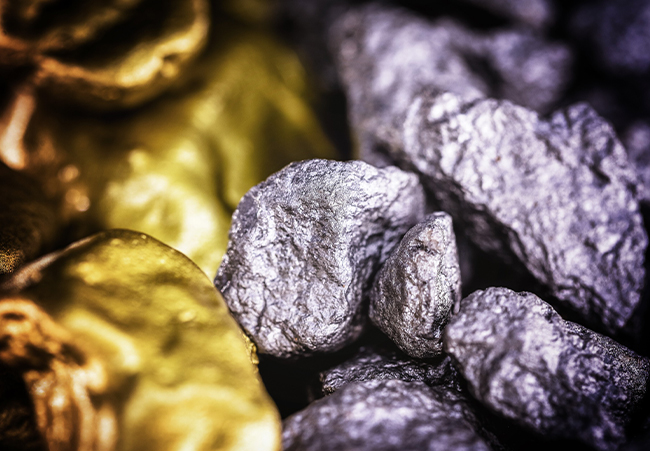Melting Points of Precious Metals

The melting point, or temperature at which a metal transitions from solid to liquid state, is an important physical property of metals. The four major precious metals - gold, silver, platinum, and palladium - each has a distinct melting point that governs its applications and use.
Factors Affecting Melting Point
The melting point of a metal is related to factors like the strength of metallic bonding and presence of alloying elements. Metals with stronger bonds between atoms require more energy to overcome those forces and melt. Alloying also impacts melting temperature.
More complex crystal structures generally have higher melting points as well. The more ways atoms can pack together, the more thermal energy is needed to disrupt that ordered structure.
Gold
Gold has a melting point of 1064°C. This is considered a relatively low value compared to many other metals.
Gold's low melting point is attributed to weaker metallic bonding between gold atoms, owing to its filled outer electron shell structure. This makes gold very easy to melt and shape compared to other metals, facilitating its use for jewellery, art, decoration, and more.
Gold's excellent malleability comes from easy melting as well. Thin sheets and wire can be produced by melting and working the soft, ductile metal. Gold also readily forms alloys with modified properties by combining and melting with other metals.
Silver
Silver melts at 961°C, even lower than gold. This low melting point contributes greatly to silver's popularity in jewellery, tableware, and decorative items alongside gold. Molten silver readily flows into moulds and fine details.
Alloys of silver like Sterling Silver (92.5% silver) take advantage of the low melting temperature to cast objects or solder components. Due to its slightly lower melting point, silver is industrially useful for brazing and soldering applications as well.
Platinum
Platinum has the highest melting point of the four major precious metals at 1768°C - over 700°C above gold. Platinum's high melting point relates to stronger metallic bonding present in its crystalline structure.
This extreme melting temperature makes platinum highly resistant to heat and deformation. As a result, platinum is uniquely suited to demanding applications like spark plugs, electrodes, crucibles for laboratories, and components of aircraft and vehicles.
Despite challenges in shaping due to its resistance to melting, platinum is still valued in jewellery for its shine and prestige. Special welding techniques like laser or electron beam welding are generally required to work platinum.
Palladium
With a melting point of 1555°C, palladium falls between gold/silver and platinum in terms of melting temperature. Palladium requires more energy to melt than gold or silver, but less than platinum.
Like platinum, palladium maintains strength and corrosion resistance at elevated temperatures. This makes it useful in electronics, dentistry, and catalytic converters in vehicles. Palladium alloys have lower melting points that allow casting into jewellery and dental crowns or bridges.
The range of melting points among precious metals enables them to assume both high-temperature and low-temperature applications. Gold and silver lend themselves to shaping, jewellery, and decorative uses. Platinum and palladium excel when the highest heat resistance is needed.
















